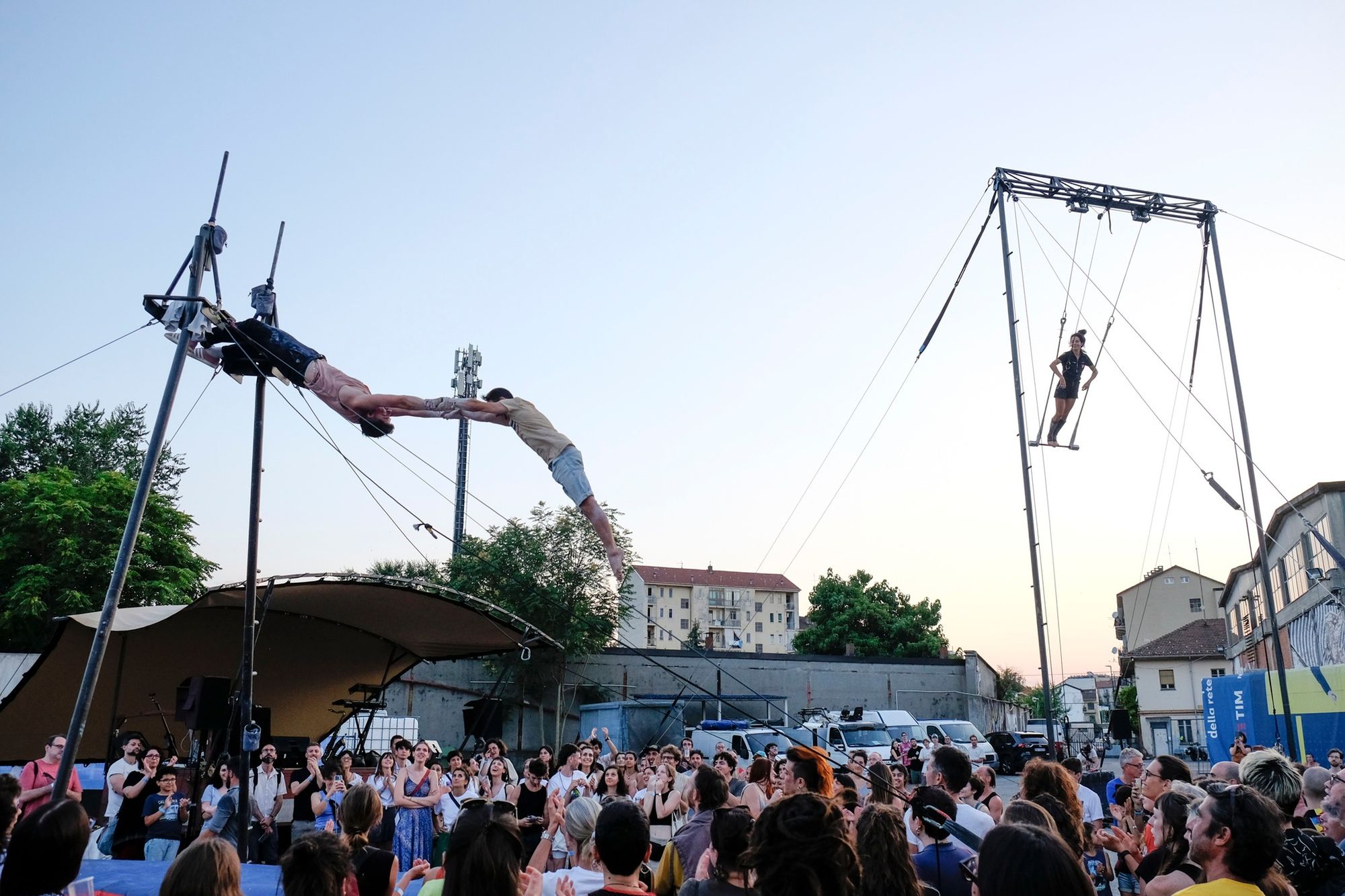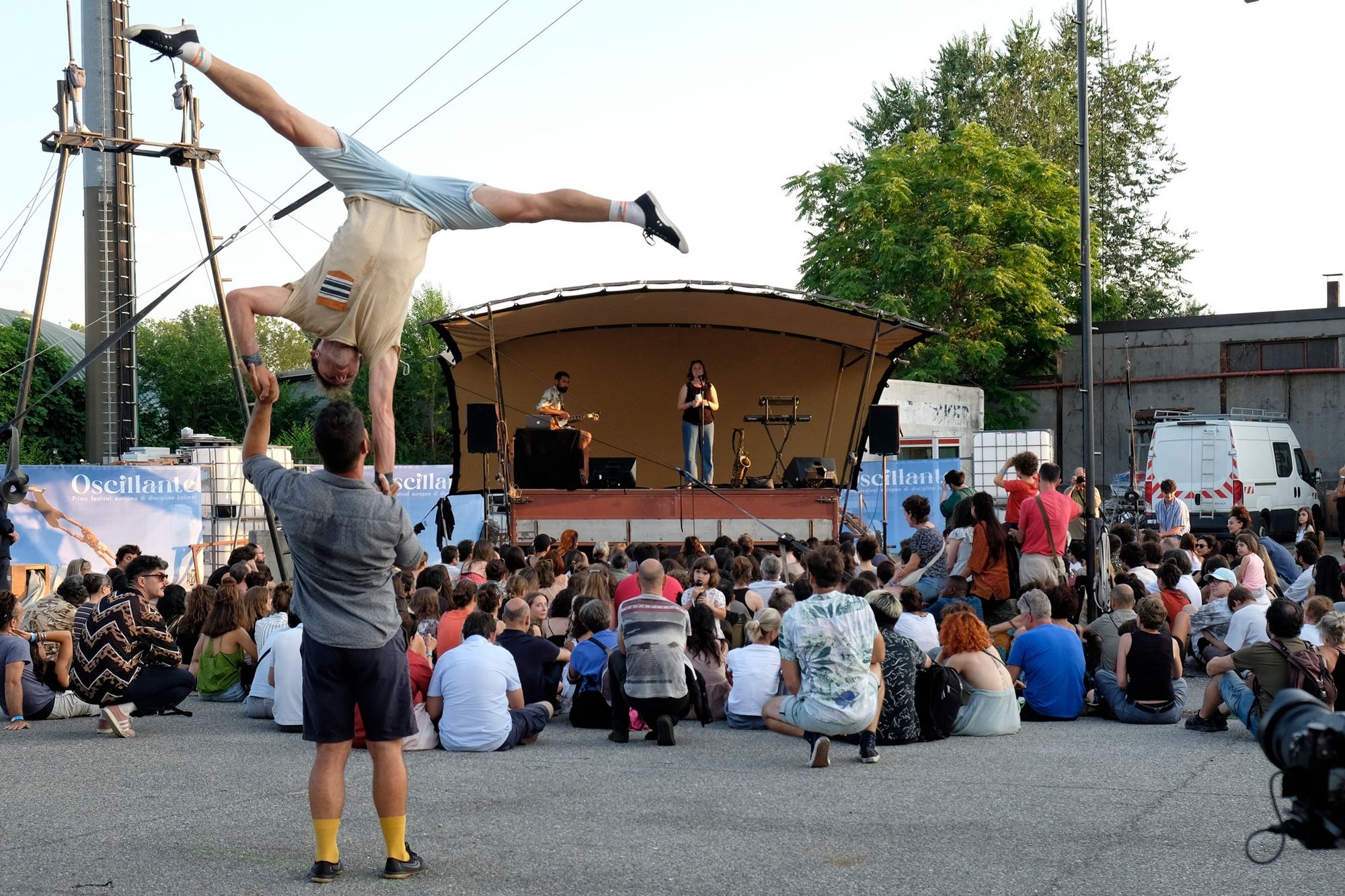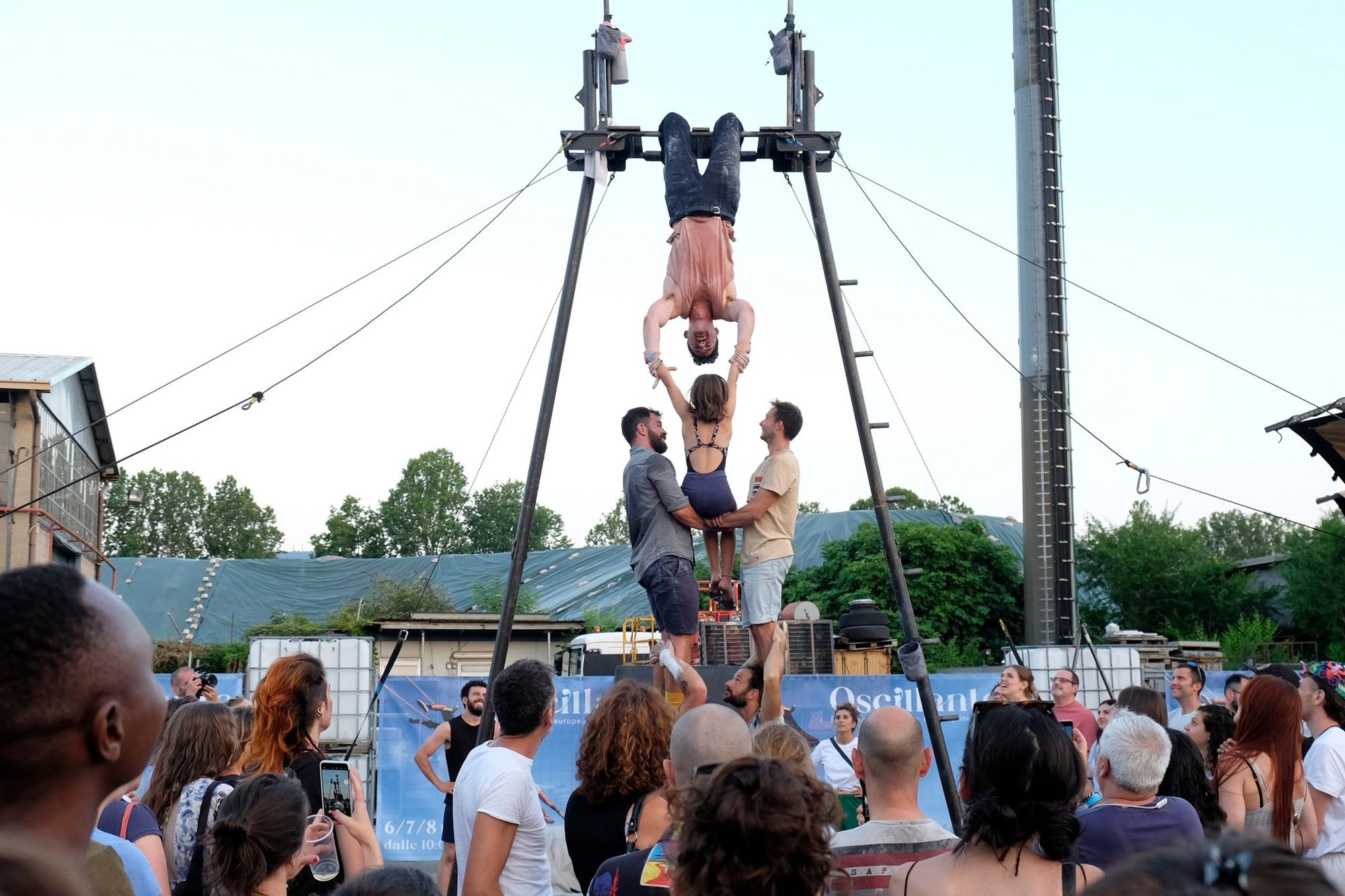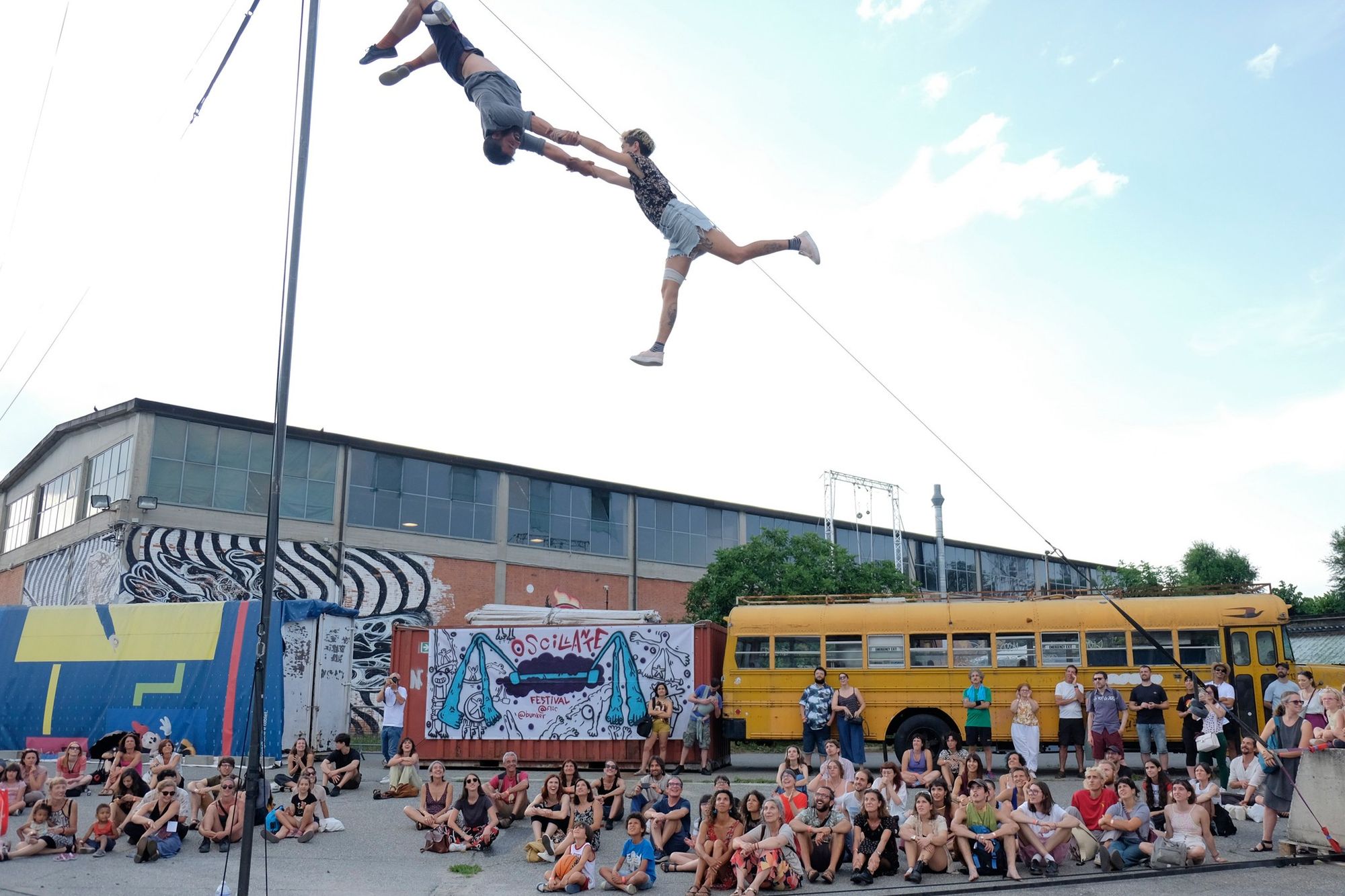We Agree to Disagree. The (in)visible human factor between politics and entertainment

After performances in Denmark at Dynamo Festival in Odense last June, we met Collectif Malunés with the show again in Italy for the first edition of Oscillante, the first European festival of ballant disciplines organised by the Flic Circus School in Turin.
With a title that sings the praises of overcoming opposition while respecting every discordant opinion, for its third creation, the Franco-Belgian company abandons the comfort zone of the circus tent, inverting its architecture to catalyse more direct contact with the audience. Collectif Malunés marks the first step of a trajectory oriented towards “porous dramaturgy,” which, in the words of the British artist and researcher Cathy Turner, is defined by audience involvement in the co-creating of the performance “through the underlying concepts and formal structures, in particular, interactivity, immersion and site-specificity." The circus company is currently working on a new artistic project that will debut in 2025, exploring the possibilities of this approach also under a big top.

In We Agree to Disagree, the audience assumes active responsibility for the performance. With a solid score that leaves room for the improvisation of its spectators, the show emphasises the strength of the collective, further a kind of democratic inclusion in the process. More than having seen the show, the “spectators” create it alongside them. The other cornerstone is the use of acrobatics and swinging disciplines, a must of Malunés, and the typical flavour of the troupe, something that reminds us of contemporary circus at its core, that purity of horizontal equality of living togetherness.

However, audience participation is at the heart of the plot, and they insert the spectators within the narrative. Each performer acts through a clearly defined role, embodying a controlling position in the physical orchestra that guides the flow of spectators. The audience is repeatedly invited to reposition themselves and change their point of view. Depending on what is happening in the perimeter delimited by a swinging trapeze, aerial cradle, teeterboard and the small stage hosting the musical band.

Circus equipment is the pivotal discipline in a map that draws the architecture of the place, renewing the spontaneity of the natural circle that takes shape around an open-air scenic action. As is often the case, live music is essential and accompanies almost every step. Between acrobatics between sky and earth, columns and hand-to-hand figures, the presenter, the technicians, the chorus, the protester, and the pianist are all characters added to the story, identified in the audience by the collective that invites them to play along.
Malunés reclaims the firm values of the circus, the ground rules between those who perform and those who watch the performance: the right to take risks, to act physically and not to be afraid of exposing one's emotions. A timeless atmosphere comes to life in which virtuosity plays on the basic emotions of the circus, the taste of risk, the beauty of the gesture, and the complicity between acrobats.

Wandering through the crowd and asking individual spectators simple and profound questions, at each performance the audience responds through its own experiences and norms of spectatorship. Is an acrobat allowed to make mistakes? When one audience member expresses frustration at a failed attempt at a trick, the question is put to the test. Immediately, the offending spectator is invited to apologise, and it is clear that the judgment here is the real mistake. The atmosphere is deliberately comic, but the text read aloud is full of cues for dealing with the shame of a mistake and the consequent bad mood.
Emotions get transformed through actions, and every single one brings responsibility. And so, through penance, the protester becomes the chronicler of a hand-to-mouth choreography that the audience is invited not to watch directly. The same scene is repeated later, but using his playback voice in front of the spectators, who are surprised by the precise description of the actions that take shape at the sight.

When the collective addresses the entire audience and asks them what they want or for whom culture exists, it reaffirms the individual's right to feel part of a collective voice. The dynamics echo a political assembly or a concert's recall. This is also a great merit of We Agree to Disagree: the acrobats take the audience into their world and entrust them with the tools to influence it. Something precious is brought to light: the chance to be an integral part of a common design. In We Agree to Disagree, a certain sentient resource transpires: being together is possible. Here, I refer to the kind of togetherness usually invoked by a public square or a party. Even if you don’t think like me, we are in it together. As if a nightmare of social norms acceptance were to give way to a possible happy end, the power of the masses is transformed from populism into participatory democracy, into a space where what we have in common does not annihilate us but binds us. In the end, we are all Collectif Malunés, and with each performance, this little, utopian miracle of community takes flight and soars among us.


